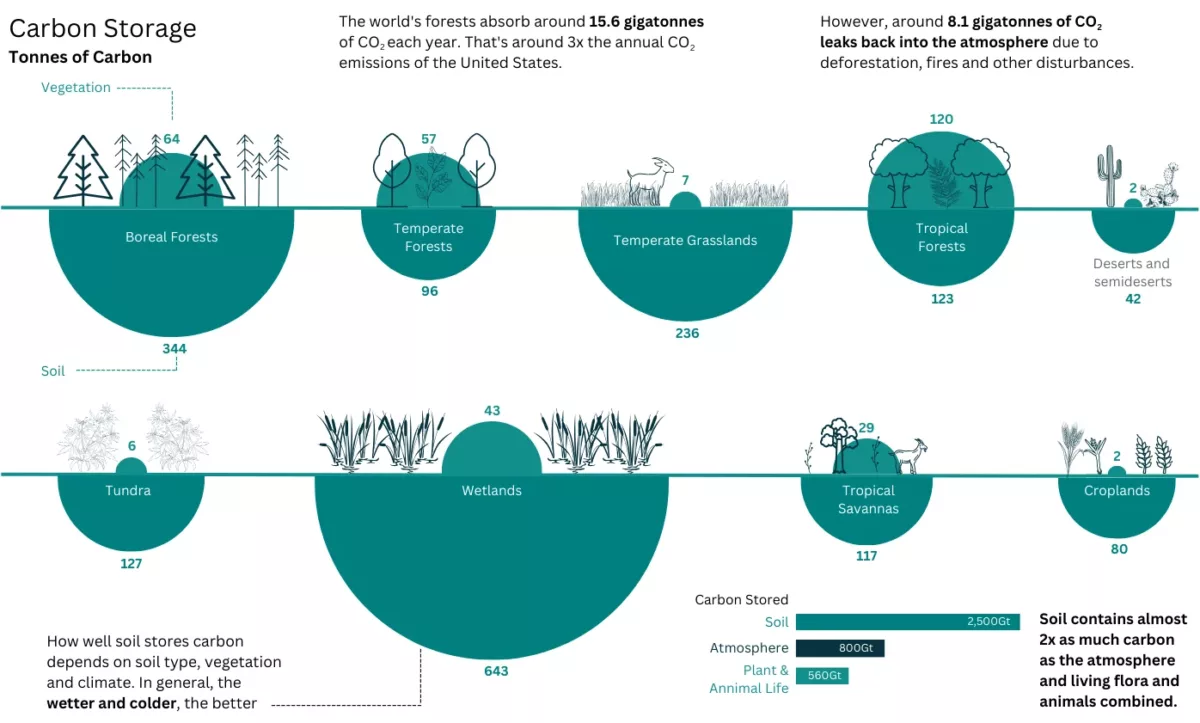Biological Carbon Sequestration Calculator
Biological carbon sequestration is seen as one of the most effective tools in the fight against greenhouse gases that contribute to climate change and global warming. Trees and other plant species convert carbon dioxide into plant matter, holding this material for the life of the tree and beyond. Planting trees is the most reliable and cost-effective way to capture carbon from the atmosphere and is a popular option for companies looking to offset their carbon emissions.
However, other habitats sequester carbon at higher rates on a like for like basis but occupy much smaller areas of lands than the worlds’ forests do. For example, Wetlands are substantial reservoirs of carbon. Despite occupying only 5-8% of the Earth’s land surface, they hold between 20 to 30% of all estimated organic soil carbon. Habitat restoration, conservation and creation of these areas could provide greater carbon offsetting returns on areas of a similar size as tree planting alternatives.
Carbon sequestration by different ecosystems, figure adapted from Visual Capitalist
The following calculations can be used to determine carbon sequestration in different habitats per unit area (hectares). The calculations could be used to determine baseline values for carbon offsetting schemes involving these habitats, or to determine the loss of carbon sequestration function if an area of these habitats were to be destroyed by activities such as commercial developments.
Comments and Suggestions
If you have any comments, suggestions or recommendations for tools you would like to see here, please complete our online tools feedback form.
Disclaimer
Please note that this or any other calculators on the wkcgroup.com tools room are for information only. WKC Group has endeavoured to ensure that the information presented here is accurate and that the calculations are correct, but will not accept responsibility for any consequential damages, faults or human errors that may arise from the use of formulas, inventories and values.


